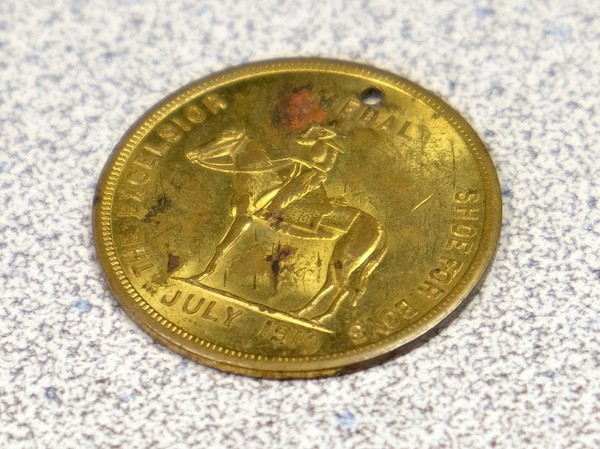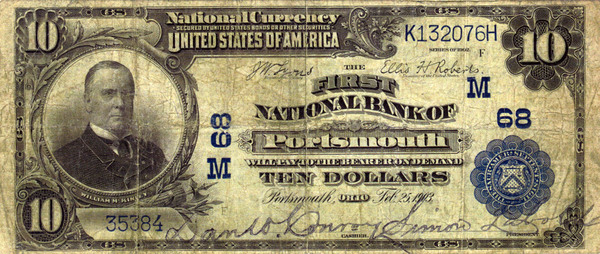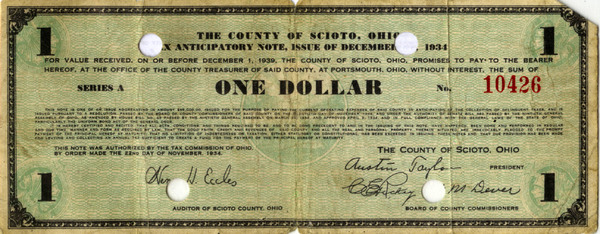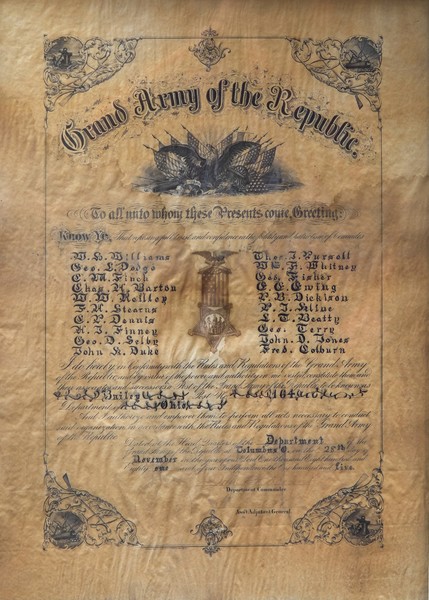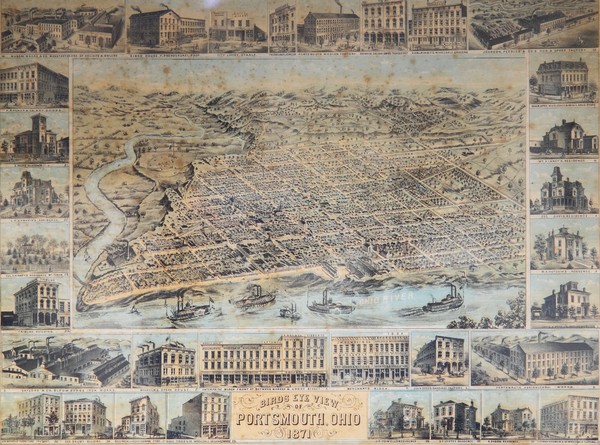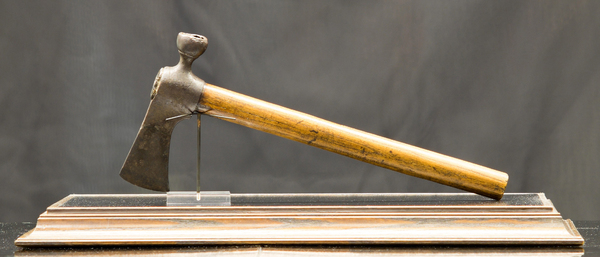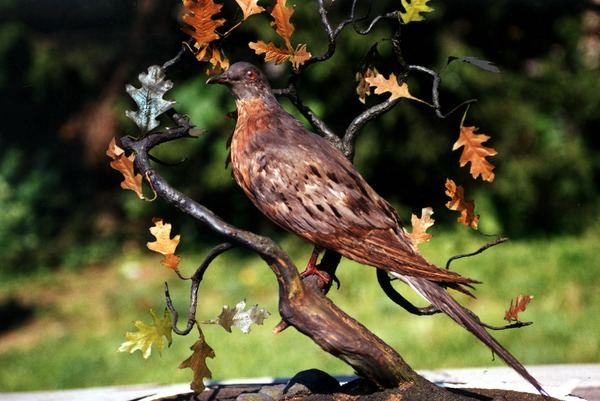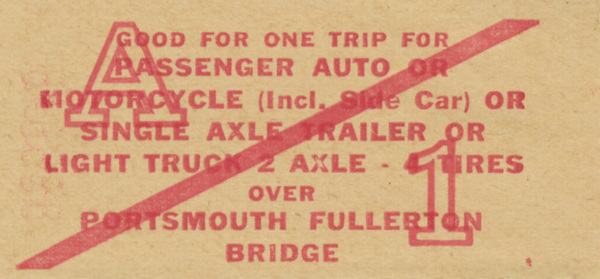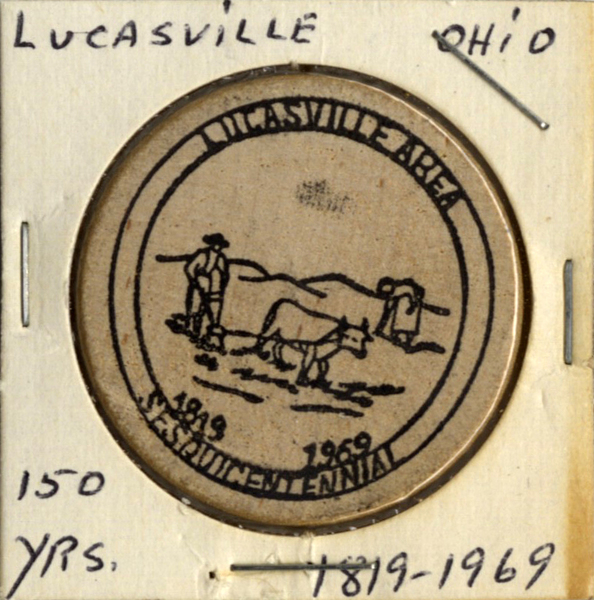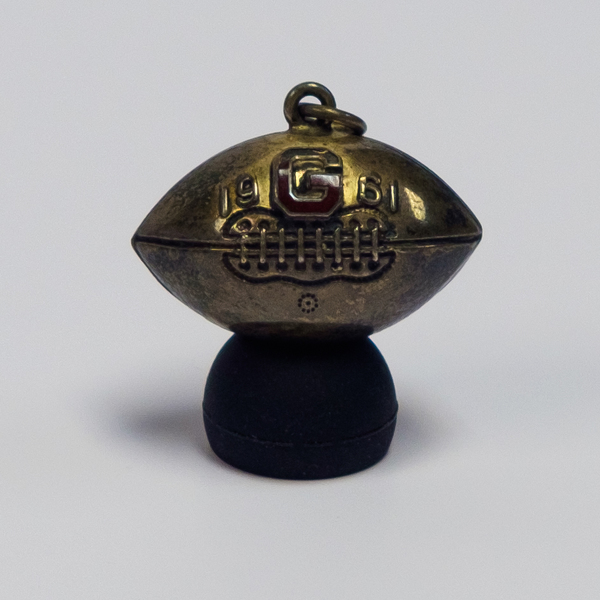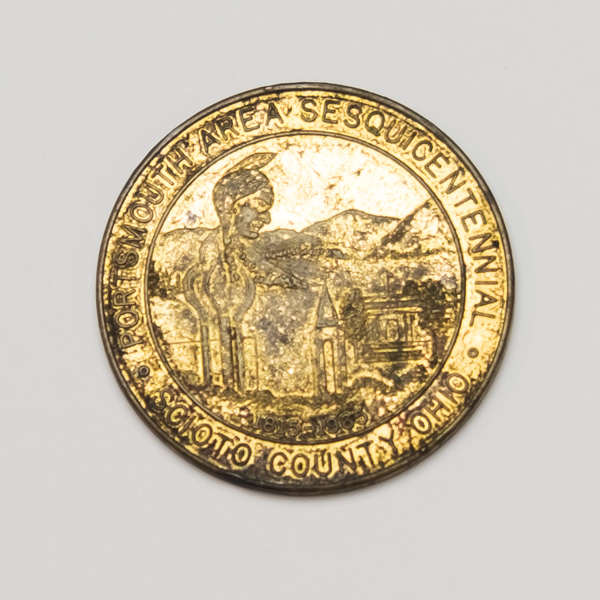Historic Item Collection
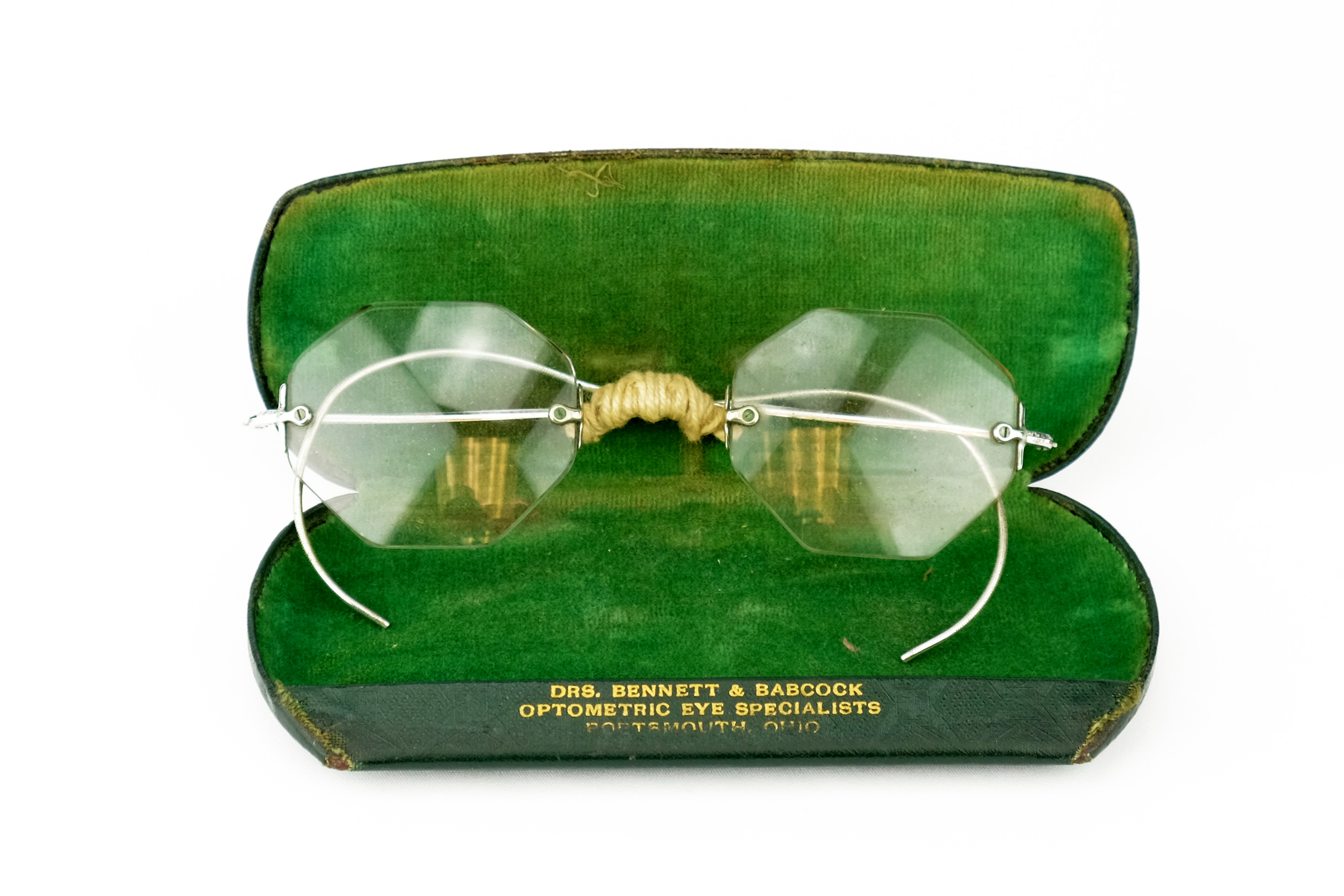
- Title
- Historic Item Collection
- Description
- Physical items housed in the Local History Department of the Portsmouth Public Library.
Collection Items
-
Excelsior Shoe Company Medallion
Gold colored metal medallion showing a horse and rider on one side and a native American good luck symbol on the reverse. Forrest and A. Grave Williams, brothers, started the Excelsior Manufacturing Company at Pig Iron Corner in Portsmouth, Ohio around the turn of the century. Excelsior became the manufacturer of "The Original 'Boy Scout' Shoe for Boys". The medallions — considered the first United States Scout medallions — were issued between July 1910, and January 1914. The original group of medallions are dated July 1910, while subsequent issues omit all reference to date.
-
Photo copy of First National Bank of Portsmouth Ten dollar bill
Color photo copy ten dollar denomination dated February 25, 1903 issued by the First National Bank of Portsmouth. The 1904 Portsmouth City Directory lists the First National Bank at 127 Market Street, officers: J.W. Bannon, Pres., A.M. Damarin, Vice-Pres. and Simon Labold, cashier. The bank was organized in 1863 , serial charter number 68. -
Scioto County Tax Anticipatory Note $5.00
Paper Anticipatory Tax Note issued by Scioto County dated December 1, 1934. This script was authorized by the county commissioners Austin Taylor, E.E. Rickey and Cliff Dever. County Auditor Henry H. Eccles countersigned the notes. It states: "This note is one of an issue aggregating in amount $65,000.00, issued for the purpose of paying the current operating expenses of said county in anticipation of the collection of delinquent taxes...." -
Grand Army of the Republic - Bailey Post 164 Formation Document
This certificate documents the founding of the Bailey Post 164 of the Grand Army of the Republic in November 1881. It was named in honor of George Bailey, who organized the Kinney Light Guards, which eventually became the 1st Ohio Volunteer Infantry (O.V.I.), Company G, also called the Portsmouth Guards. The certificate, which measures 14.5 by 20.5 inches (36.83 by 52.07 cm) shows water damage, presumably caused by a flood of the nearby Ohio River. It lists the twenty original members of the organization. Following the Civil War, numerous veterans' organizations sprang up around the country. The Grand Army of the Republic was one of the largest and most influential. -
Lithograph of Bird's Eye View of Portsmouth 1871
Faintly tinted drawing of Portsmouth as if viewed from the air in 1871. Businesses and prominent residences are numbered 1 thru 32 on the drawing and identified by number in the margins. -
Joseph Miller's Tobacco Pipe Tomahawk
Blacksmith Christy Hare made this tomahawk tobacco pipe for pioneer settler Joseph Miller (1762-1845). It measures 6.5 by 14 inches (16.51 by 35.56 cm). Miller kept the tomahawk, which he used as both a weapon and a pipe for smoking tobacco, with him, even when attending religious services. He reportedly battered the bowl of the pipe while attempting to shoot a bear in a cave. Joseph Miller was a scout for the federal government, exploring the Northwest Territory and fighting American Indians. He was one of the earliest residents of Gallipolis. Miller was reportedly involved in one of the last fights between settlers and American Indians in Ohio. After the signing of the Treaty of Greenville established peace between the settlers and the American Indians, the government no longer needed scouts. Miller moved to Lawrence County, where he farmed and hunted. -
Passenger Pigeon
This passenger pigeon was shot in an orchard on Offnere Street in Portsmouth, Ohio by Arthur Bannon around 1882. He presented it to his mother, a taxidermist, who wanted a specimen of the nearly extinct bird for her collection. The male passenger pigeon is dark brown with a copper-colored breast and stands 7 inches (17.78 cm.) high and is 15 inches (38.1 cm) long from its head to its tailfeathers. Passenger pigeons were once the most numerous species of bird in North America and provided a seemingly endless supply of meat, fat, and feathers to early settlers. Contemporary observers described migrating flocks of passenger pigeons as blackening the skies due to their large numbers. Later in the century, commercial hunting of passenger pigeons became popular. The growth of the railroads promoted pigeon hunting, since the trains could transport pigeon meat to major markets with no danger of spoilage. By the late 1880s, the decline in the passenger pigeon population became irreversible. It is now extinct. -
Portsmouth Fullerton Bridge ticket
3 tickets tan in color with red print. The first U.S. Grant Bridge was a toll bridge for many years. -
Isaac Bonser Glasses
Isaac Bonser, 1767 - 1849, was an early pioneer of Scioto County. He settled along the Little Scioto in 1795 and later built the first water powered mill at Bonser's Run near present Sciotoville. -
Lucasville Area Sesquicentennial 1819-1969
Wooden coin with Native American on one side and farm scene and title on other side. Lucasville was platted by John Lucas on August 7, 1819. -
1961 Glenwood High School Football Charm
Silver with tarnish football charm with red "G" and 1961. The 1961 Tartan East High School Yearbook lists 10 football victories out of 10 S.O.C. games scheduled. -
Portsmouth 1965 Sesquicentennial Souvenir Half-Dollar
June 1965 Portsmouth Sesquicentennial Souvenir half-dollar coin with gold color; some tarnish. One side depicts Native American and valley, other side redeeming information. On December 29, 1814 the Ohio legislature passed an act to incorporate the town of Portsmouth in Scioto County. This act took effect March 1, 1815.
Collection Tree
- Historic Item Collection

